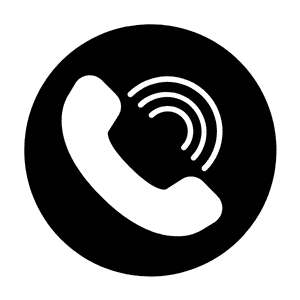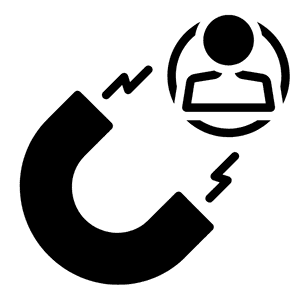Cold texting is an outreach process involving SMS messaging to contacts with no prior relationship with the sender. Businesses often use it to acquire new leads and quickly build relationships with potential customers. Texting has a high message open rate of 98%; thus, companies using SMS marketing explore cold texting to solicit business with new and potential customers. However, cold texting is not without its drawbacks. If not done correctly, it can become intrusive and even illegal.
Text message marketing is still an effective tool to generate leads and sales. High click-through and open rates make it better than other channels, such as email and phone calls. But similar to other means of outreach, you must know how to do it properly and get prior permission from the recipient. Cold texting is illegal if you have a contact’s number but no pre-existing relationship. This article will discuss what you need to know about cold texting, its definition, its effects, and alternatives.
What is Cold Texting?

Cold texting is the term used for when you send an SMS message to someone with who you have had no prior contact. It’s similar to cold calling or emailing: reaching out to a stranger.
A “cold text” is used when you send a prospective customer a text message without their consent. In other words, if you didn’t get the person’s phone number from them or with their permission, then any texts you send to them would be considered cold texting. To avoid being rude and intrusive, always get consent before sending mass texts or even just one single text message.
For sales and business, cold contact with a customer is often done through phone or email without any prior relationship. Cold text messaging functions in the same way as cold calls and emails.
Some examples of cold texting are when you send a text to a customer that they didn’t know was coming. If you found their information online or got it from somewhere else without their knowledge, there’s a high chance that you’re cold texting them.
Who uses Cold Texting?
Marketing and sales teams from businesses use cold texting to reach out to new customers and generate leads. Companies looking to acquire more leads can benefit from this outreach if appropriately done.
It is awkward to text someone you don’t know yet, but some businesses do it to reach out to prospects and for appointment reminders. Be more cautious in the beginning since texting is a personal matter. As time passes and you become more comfortable with each other, text during business hours more frequently, then gradually begin pushing boundaries (but not too much).
Why should you not use Cold Texting?
The main reason you should not use cold texting is that it is prohibited by law, and you may get fined for it. Some states have laws that limit the use of unsolicited text messages for marketing purposes which can lead to penalties if not followed properly.
In contrast to cold calling and cold emailing, cold texting is restricted. The Telephone Consumer Protection Agency (TCPA) and Federal Communications Commission (FCC) have established regulations requiring businesses to get an opt-in from customers before they text them. If a company fails to do this, it could face substantial charges.
Texting strangers, or “cold texting,” is not only illegal, but it’s also rude. Texting is a unique platform that requires some level of relationship-building to succeed. It’s unlikely that someone will respond favorably to your cold text message. The consumer will flag your number as spam instead, and you’ll lose out on a potential customer because they’ll have a negative view of your business.
What are some examples of Cold Texting?
Cold texting may sound rude and intrusive, but businesses often rely on it to get in touch with prospects. There are certain situations when a company needs to send a cold text message. Here are some examples of cold texting.
- Texting a customer without consent – Sending unsolicited text messages to customers when they have not given their consent or subscribed to a service is an example of cold texting.
- Texting customers using a purchased contact list – When businesses acquire contact lists from unverified sources and send messages to them without their permission, it is an example of cold texting.
- Texting customers using the information found online – Another example of cold texting practice is gathering information from online sources such as social media sites and sending messages to individuals without their permission.
What are the Effects of Cold Texting?

When cold texting is used in business communications, it has advantages and disadvantages. The cold texting process will directly impact your company’s structure, so you need to know how it operates before implementing it.
Cold texting may help sales representatives keep in touch with their prospects to generate more leads and create opportunities for business growth. It increases brand awareness while building stronger relationships with potential customers. Texting outreach is also more personal and direct. It is effective in reaching a large number of people in a short time.
On the other hand, cold texting can also have negative consequences. If a customer receives an unsolicited message, they may flag it as spam and never contact you back. Not following the regulations set by TCPA or FCC will get your business fined. Text messages sent out of context can also be considered intrusive and result in customers unsubscribing from your services.
What is the best alternative to Cold Texting?
Warm texting is the main alternative to cold texting. It is a personalized approach to connecting with customers by making them feel unique and valued. Warm texting should be used when you already have an established relationship with the customer or if they have given permission for your company to contact them.
Warm texting requires building relationships through meaningful conversations, knowing exactly what makes each customer tick, and providing value that resonates with them. It should include customer-centric content personalized to the individual, such as special offers and discounts tailored to their needs.
Other alternatives for you to try instead of cold texting are the following.
Offer an SMS Sign-up on your website – A fantastic way to receive a customer’s permission to send them text messages is to suggest an SMS sign-up during checkout or when they create an account with you. When they provide you with their phone number, they agree to sign up for promotional information, etc., you have nothing to worry about. When a customer receives wanted texts from businesses, it helps build good relationships between the customer and the industry.
Keyword Opt-In – A keyword is a word that, when used by consumers to text your businesses’ phone number, automatically signs them up for future message campaigns. You can create different keywords for each purpose depending on why your customers might text you.
Integrate SMS marketing tools with your system – Integrating your SMS marketing platform with your existing customer database is another great way to ensure you only send relevant messages. It will allow you to send custom messages based on their preferences and past behaviors.
Have a Click-to-Text Button on Your Website – By clicking on the Click-to-Text button, it will automatically launch your prospect’s messaging program that is downloaded onto their device. The SMS application on the visitor’s cell phone will appear with a pre-written message and the sender’s phone number already filled in.
How can I turn Cold Texting into Warm Texting?
Warm texting makes customers feel valued and essential. It is the best alternative to cold texting. According to a recent study, over 74% of people would rather text a business if they knew a real person was responding on the other end. You can use this to your advantage by making it easy for prospective customers to sign up for texts from your business. Follow these simple steps to get started.
- Make Your Phone Number Public

Although you cannot text a sales prospect without their expressed permission, they can text you first – that is, if they have your number. They will only know your number if you make it available whenever you believe they may be interested in what you’re offering. Having potential customers contact you are a simple but essential component of getting new leads.
Your potential customers should easily find your phone number on your website, social media, and any marketing materials. Remember to showcase your phone number in your landing pages, physical mailers, and display ads. Unclear or unavailable contact information will make it difficult for interested parties to reach you.
- Create value to attract more leads

You can reel in new potential customers by providing them with content that enriches their lives. You can give value in several ways, such as through webinars, articles, or social media posts. You could also collect leads by providing a demonstration or consultation without resorting to content creation.
If you’re looking for more sales and opportunities, try implementing these extra lead capture tools. They’ll enable your marketing or demand generation team to generate even more leads for your sales team so that you can close more deals.
- Get Permission to Send Updates

Opt-ins are necessary to avoid legal issues, and receiving an opt-in should reassure you that the customer is interested in communicating with your company. According to a study, 78% of people would rather text businesses than call them. So, act accordingly by exhibiting proper etiquette when texting customers and always ask permission before sending messages (i.e., obtaining their opt-in).
You can secure an opt-in from your customers via a few methods. One way is to have them reach out to you first by text, so ensure that your texting number is both public and quickly found. Another approach for obtaining an opt-in from customers is to ask if they would like to communicate with you through text message – this request can be made in person or over the phone.
- Use Short Keywords

You can create a keyword campaign to increase customer engagement. You can have them text in specific keywords that trigger predetermined messages or responses from your side. Short keywords let your customers or prospects text a quick message to your number and automatically sign up to get messages from you.
The best thing about short keywords is that you can place them online and offline to get direct opt-in from potential customers before even contacting them. Some ideas on where to put these keywords are on social media, website chatbot, and customer support.
Is Texting Random Numbers Illegal?
No. Texting random numbers is not deemed illegal. However, it is heavily restricted. The U.S. government has always been strict concerning telemarketing and robocalls to protect consumers’ privacy. It can be seen as far back as the Communications Act of 1934 was amended by the TCPA of 1991.
It is also illegal to purchase a contact list for bulk cold texting. In Europe, GDPR regulations necessitate opt-in before any outreach can take place. Also, if you use an automated system to send bulk messages, the opt-in must be evident and easy to understand.
Is Cold Texting used in SMS Marketing?
Yes. Cold texting is used in SMS marketing and business texting. There are several highly successful strategies for using telemarketing as part of your sales process, and you can do so while staying within the law. If you educate yourself and follow a straightforward process, you can use texting to turn people interested in your business into actual subscribers. Before you can use text messages to reach out, you must first get permission from the person to use their phone number.
Read more about What is SMS Marketing to understand its benefits for your business.
Is soliciting via text considered Cold Texting?
Yes. Solicitations are usually conducted through cold texts, meaning customers are sent unsolicited messages without prior consent. This kind of unsolicited message from a company is also known as spam or junk mail and can be illegal in certain countries. It’s essential to be aware of the laws in your region and to ensure that you abide by them.
Is Cold Texting Illegal?
The answer depends on the country or region where you are located. Generally, cold texting is not illegal if done correctly. However, it must comply with applicable privacy regulations, including those from CAN-SPAM, GDPR, and TCPA. When sending a cold text, ensure that you have obtained user consent and that users can opt-out of the messaging list anytime. Additionally, the messages must be professional and clearly explain what is being communicated within the SMS message.
